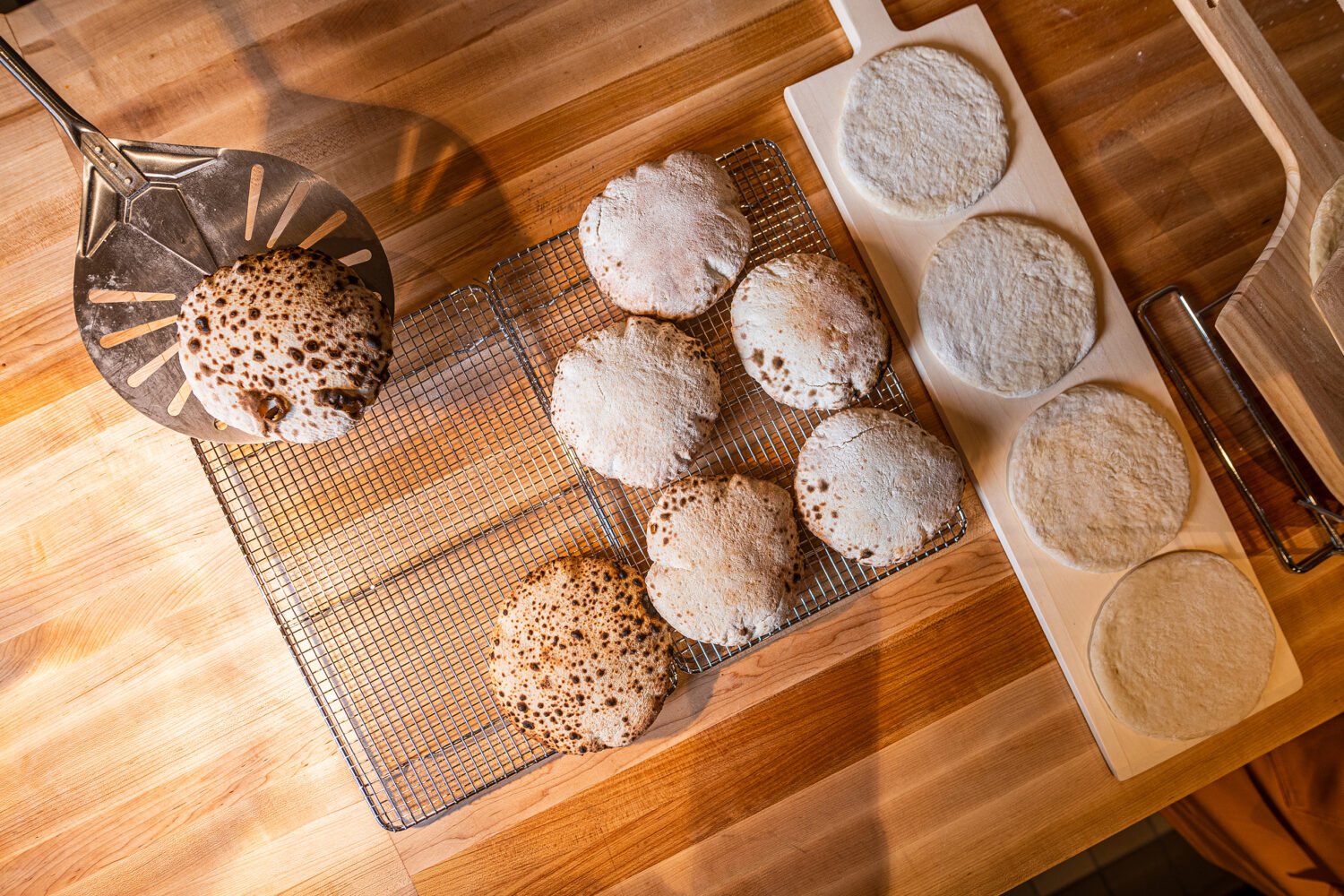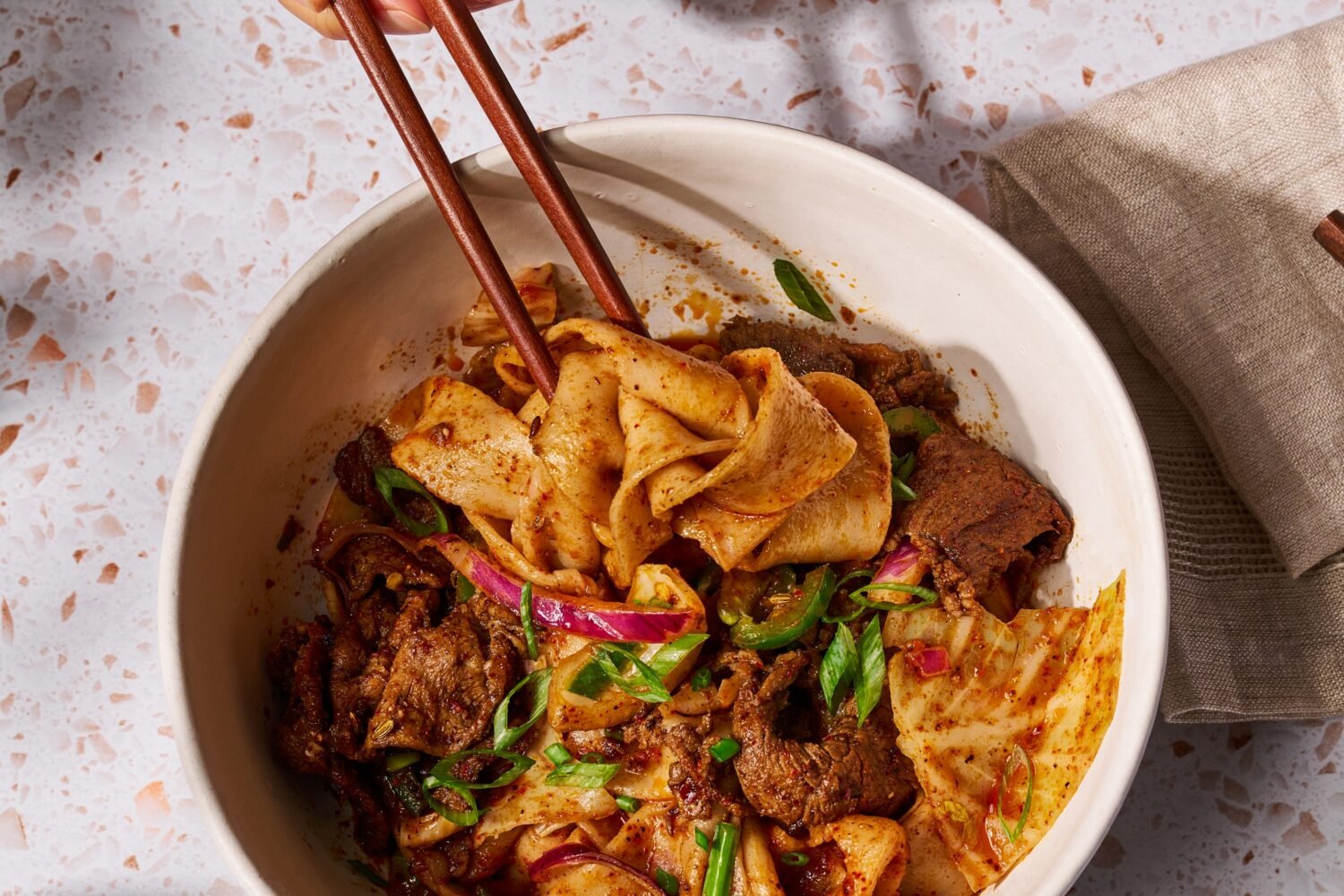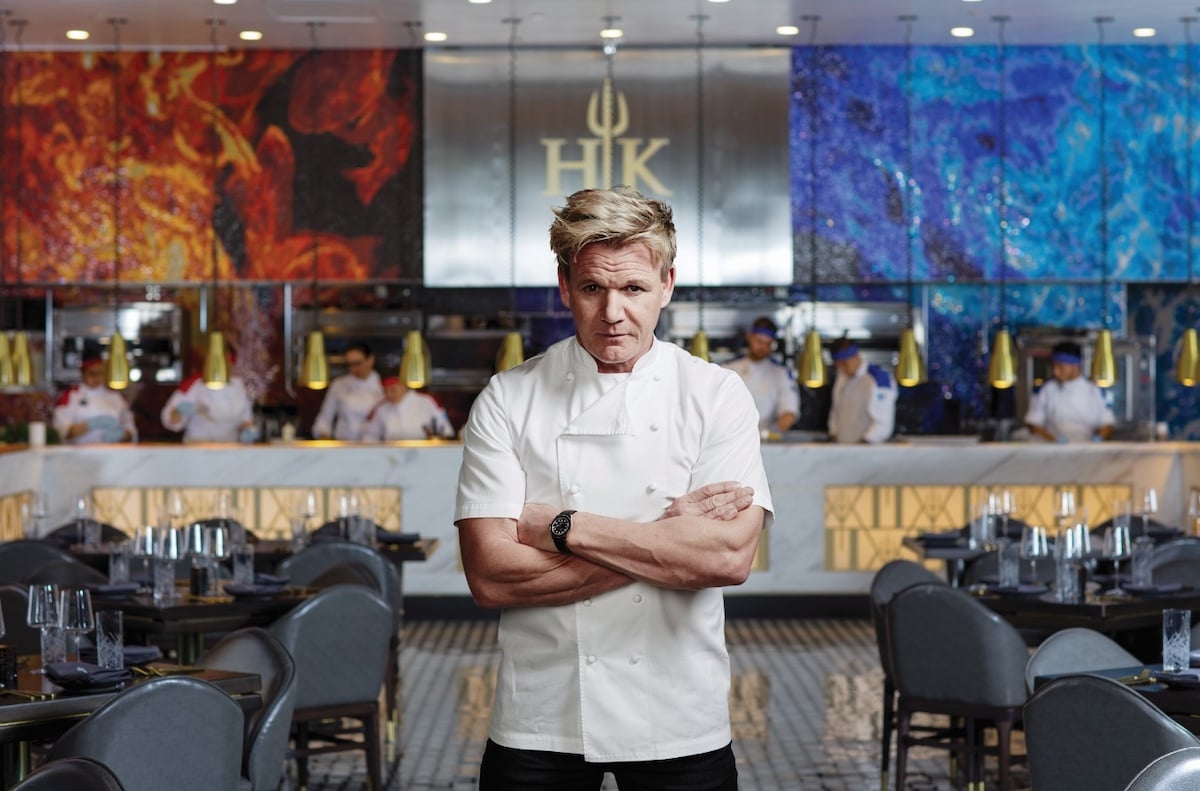Hell’s Kitchen, 652 Wharf St., SW.
Since the ’90s, DC has had its share of celebrity chefs swooping in to open satellites of whatever empire they’ve created in New York or California or France. Perhaps you remember the period between 2007 and 2009, which brought sleek-lined steakhouses (Michael Mina’s Bourbon Steak, Jean-Georges Vongerichten’s J&G), hotel dining rooms from Michelin-anointed gods (Eric Ripert’s Westend Bistro, Alain Ducasse’s Adour), and a fusion temple in Penn Quarter from Wolfgang Puck (The Source).
But besides the freezer-aisle-friendly Puck, none of these out-of-towners have boasted the megawatt name-brand recognizability of Gordon Ramsay, the British chef and TV star. Last fall, he opened a snug fish-and-chips shop at the Wharf. But the real reason he’s touched down here is Hell’s Kitchen, just across the way, which opened in January and is named after Ramsay’s 18-year-old Fox competition show. The massive two-story restaurant—whose scale recalls the giant seafood houses of the old, pre-Wharf Southwest waterfront—has siblings in Vegas, Tahoe, Atlantic City, and Southern California casinos. It joins a portfolio of more than 70 restaurants around the world, which range from all-you-can-eat pizza in Dubai (and soon DC) to London’s three-Michelin-star Restaurant Gordon Ramsay.
The upstairs dining room is, the host says, booked three months out. But you can easily walk into the first-floor lounge area, crowned with a huge pitchfork chandelier, and score a high-top by the waterfront window or a seat at the sizable bar. Just try to avoid sitting too close to the giant vertical TV by the door, where Ramsay pops up every minute or so to jubilantly welcome diners to “the Nation’s Capital.”
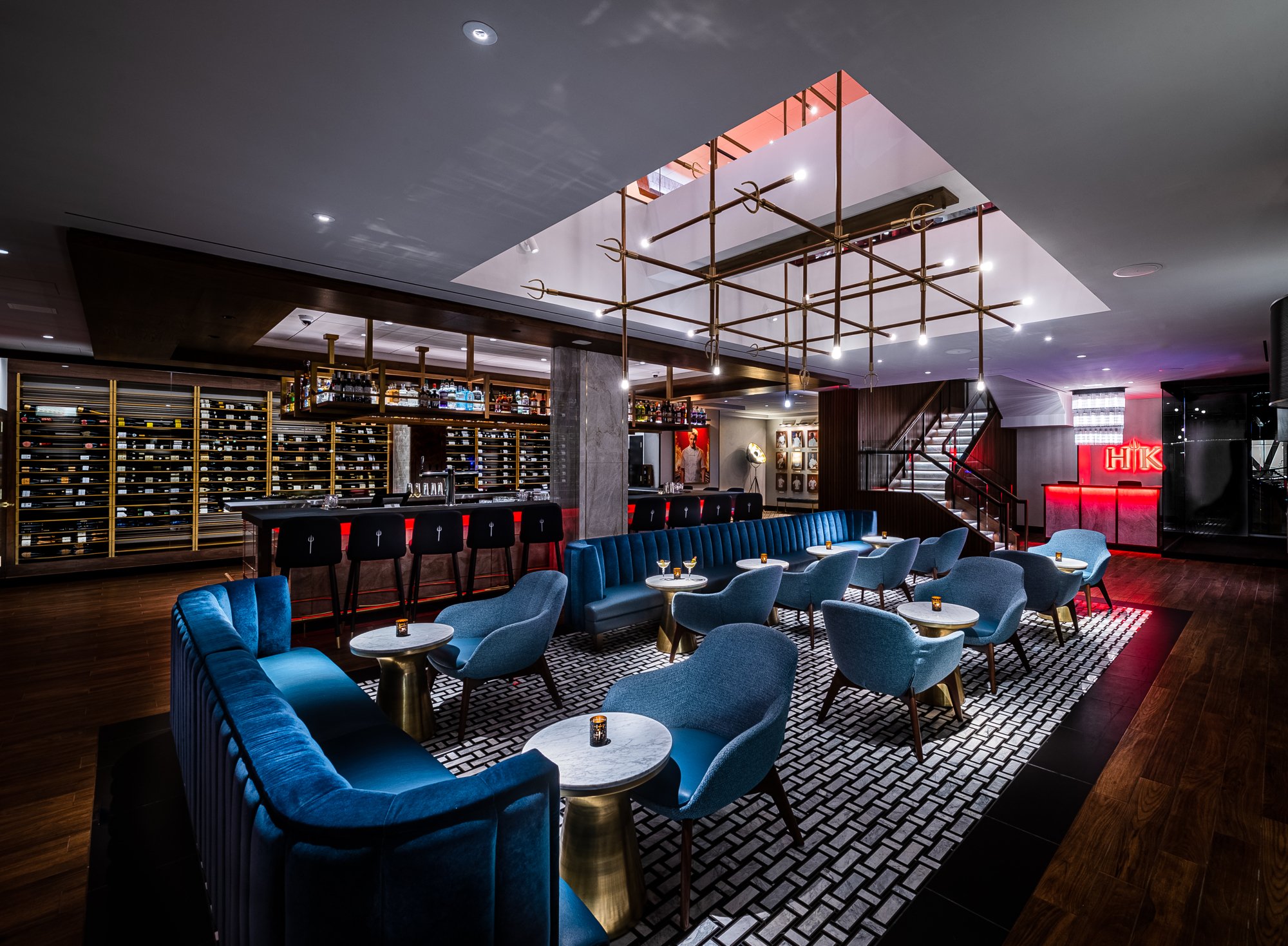
The near-constant stream of customers taking selfies in front of that thing reinforces that some folks aren’t necessarily here for the food. One hopeful woman next to me at the bar asked the bartender if Ramsay might walk through at some point. “He was here for the pre-opening,” he said. “It’ll probably be another year.” Sad face! Even so, Ramsay stans can always hit the merch room, which comes with its own menu and sells $100 Gordon Ramsay chef coats and $18 “Oh Hell Yes” pint glasses.
Actually, I’ve never been to a restaurant as obsessed with its proprietor as this one. Ramsay is everywhere, even on a tiny piece of paper clipped to my sugary green-tea-and-gin “Notes From Gordon” cocktail. “Why Did The Chicken Cross The Road?,” it read. “Because You Didn’t F***ing Cook It.” –Gordon Ramsay.
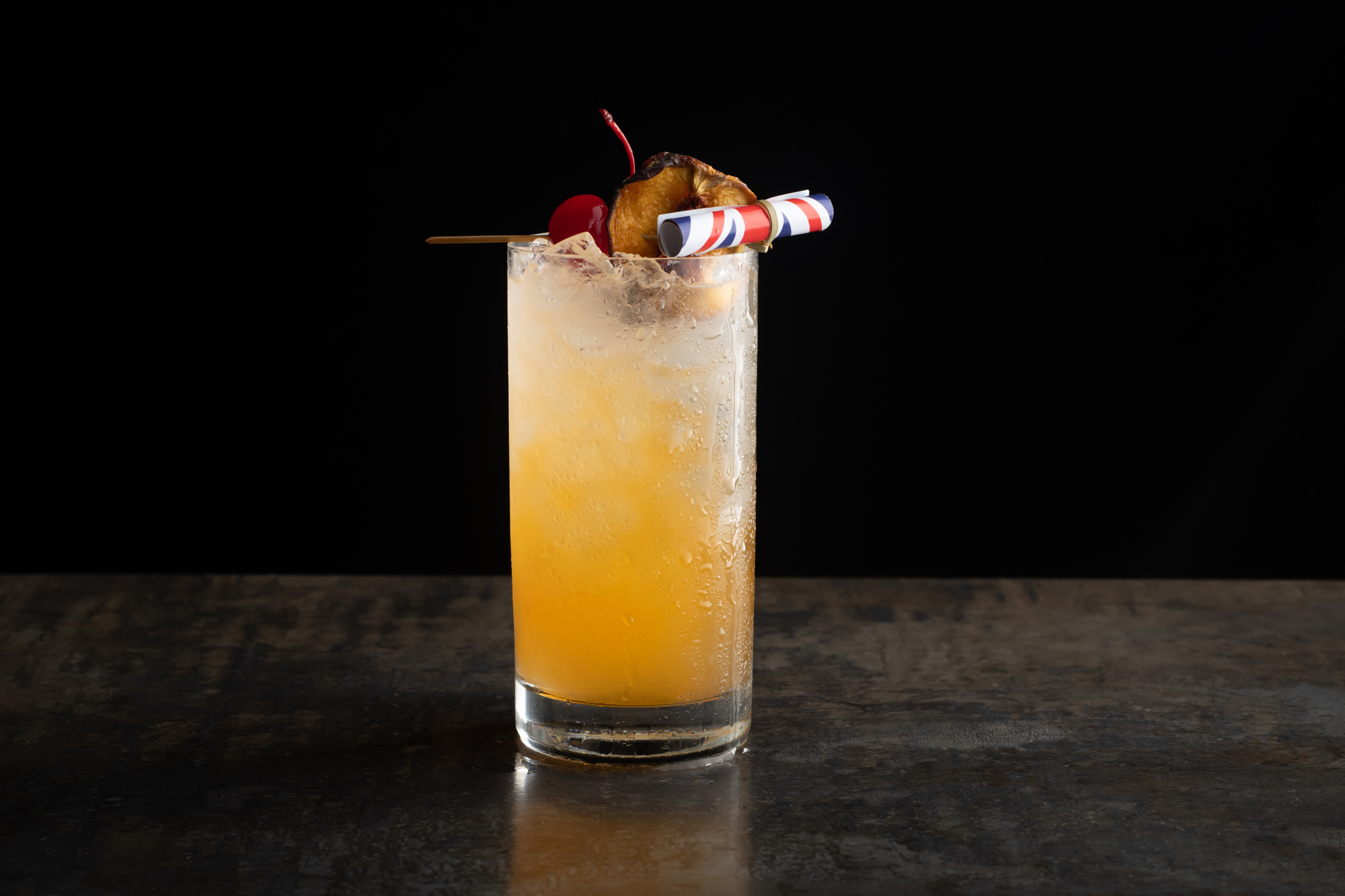
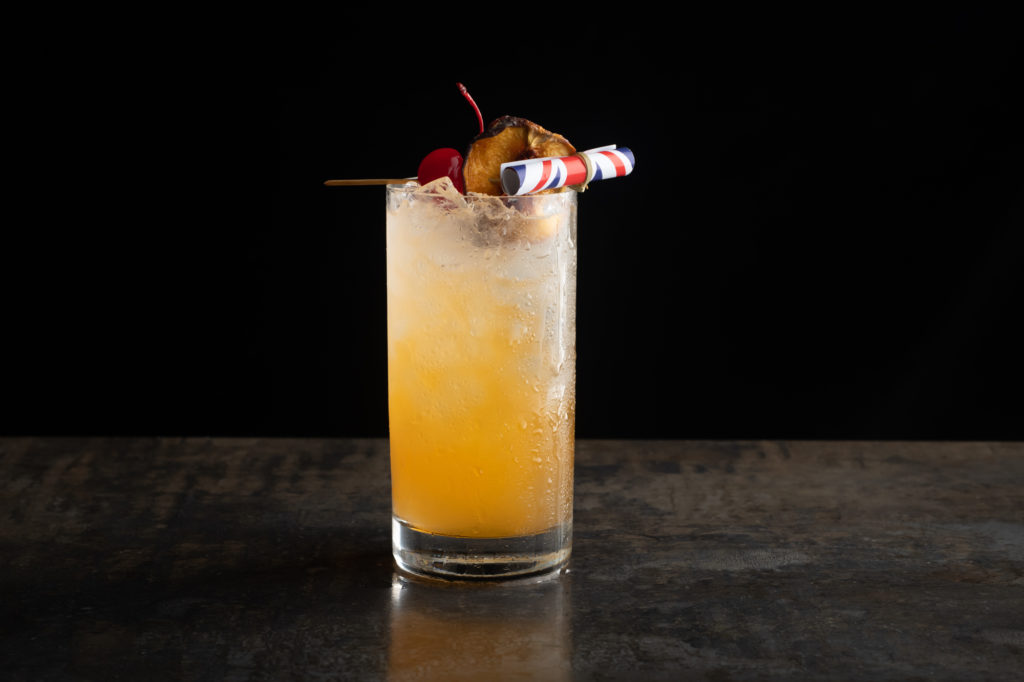
One of Ramsay’s reality-TV shticks—on a former show, Kitchen Nightmares—is to give ailing restaurants kick-in-the-ass makeovers, hurling insults like “How f***ing depressing is that?” about a pork chop. I found myself asking the same question about the skillet of Wagyu-and-pork meatballs in front of me one evening. Draped in chunky red sauce, they looked the checkered-tablecloth part. Too bad every element—the meatballs, the marinara, the polenta croutons—was positively obliterated with salt.
Other dishes, such as Ramsay’s famous scallops, suffered from the opposite problem. The scallops were seared beautifully but had barely any flavor. (Aggressively smoky lardons and a few listless slices of green apple didn’t help.) It’s tough to find good foie gras these days, I get that, but the slab here was a faint approximation of what the custardy liver should taste like. The overly sweet shortbread and stewed cherries could mask only so much. And a mound of ahi-tuna tartare was tossed with chilies and Asian pear, and while many cubes of fish tasted fresh, they were overshadowed by the few that most definitely did not.

Although an appetizer of lobster-topped butternut-squash risotto bore the skin that results from a dish sitting around too long on the kitchen pass—a common occurrence during my meals—it perked things up a bit. The creamy rice was tender and comforting, and the butter-poached lobster tail was nice enough, though it could have been sweeter. Would I come here just for that? No, especially given its $30 price tag. But comparatively, it was fine.
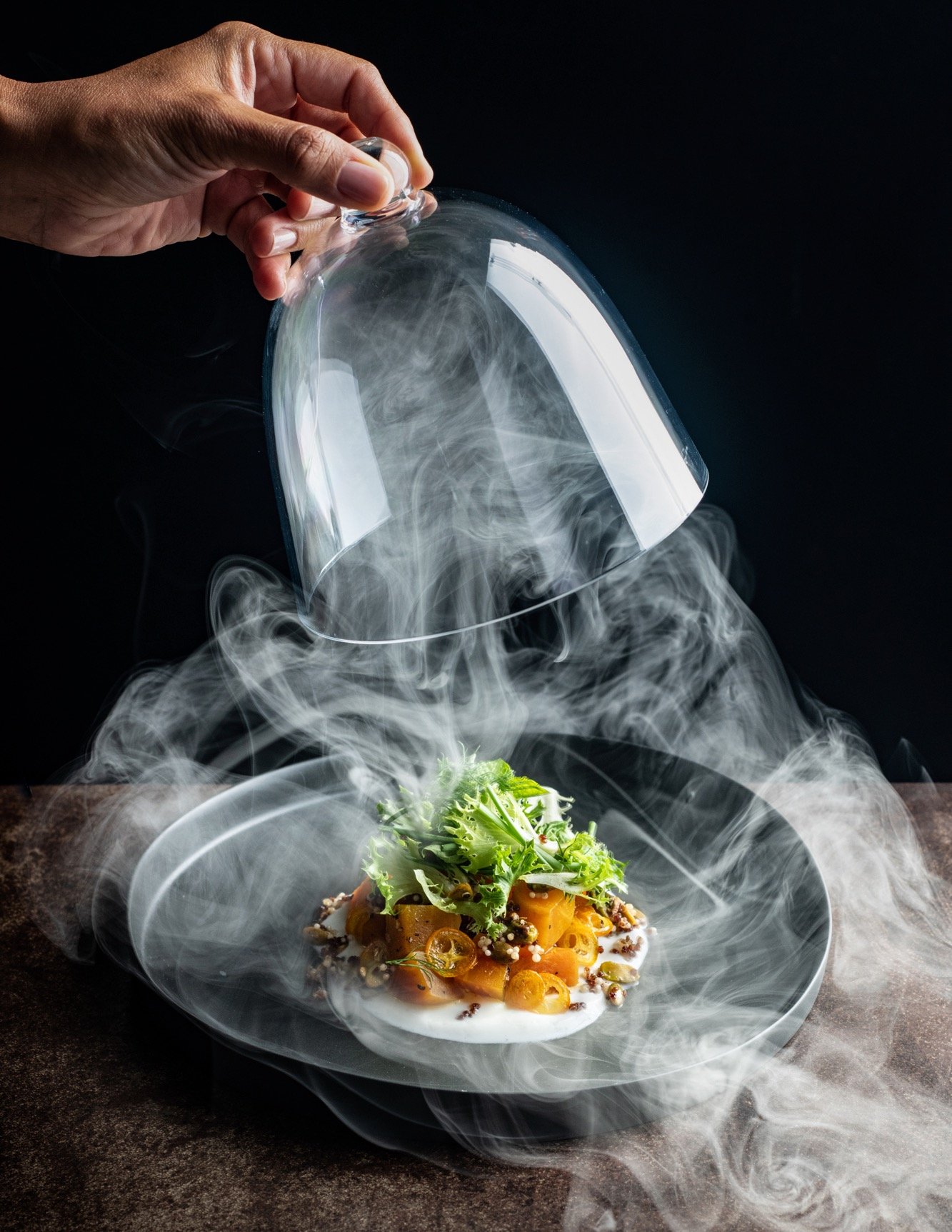
My favorite starter was the beet salad. In the restaurant’s promotional photos, it’s pictured under a dramatically smoky glass cloche, but there was no such ceremony at my dinner. No matter, the arrangement of multicolored beets sprinkled with pistachio granola and set atop a thick pool of Greek yogurt didn’t need anything more.
You’ll hear the servers tout a Ramsay signature: the beef Wellington. Believe them. It’s the best savory course on the menu. The wet-aged filet mignon, seared to a perfect medium rare and brushed with mustard, is wrapped in layers of duxelles, a chive crepe, and buttery pastry crust. At $65, it arrives split into two and makes an excellent share. The runner-up entrée is a filet of salmon with lentils and citrusy beurre blanc. Just say no to the chicken scaloppine, a Cheesecake Factory–like portion of dry breast meat doused in another too-salty sauce.

Besides the Wellington, there are a couple bright spots to a meal here: two desserts, the sticky-toffee pudding with dulce de leche ice cream and the coconut shell filled with coconut sorbet and bits of coconut cake. Drinks, too. One, the rye-based Smoke on the Water, arrives in a lantern filled with smoke (plus both an orange rind and an ice cube stamped with a teeny Hell’s Kitchen logo). Another winner is a tart, frothy mix of bourbon, port, and grapefruit liqueur.
But the rest? For now, stick a pitchfork in me—I’m done.
This article appears in the April 2023 issue of Washingtonian.




